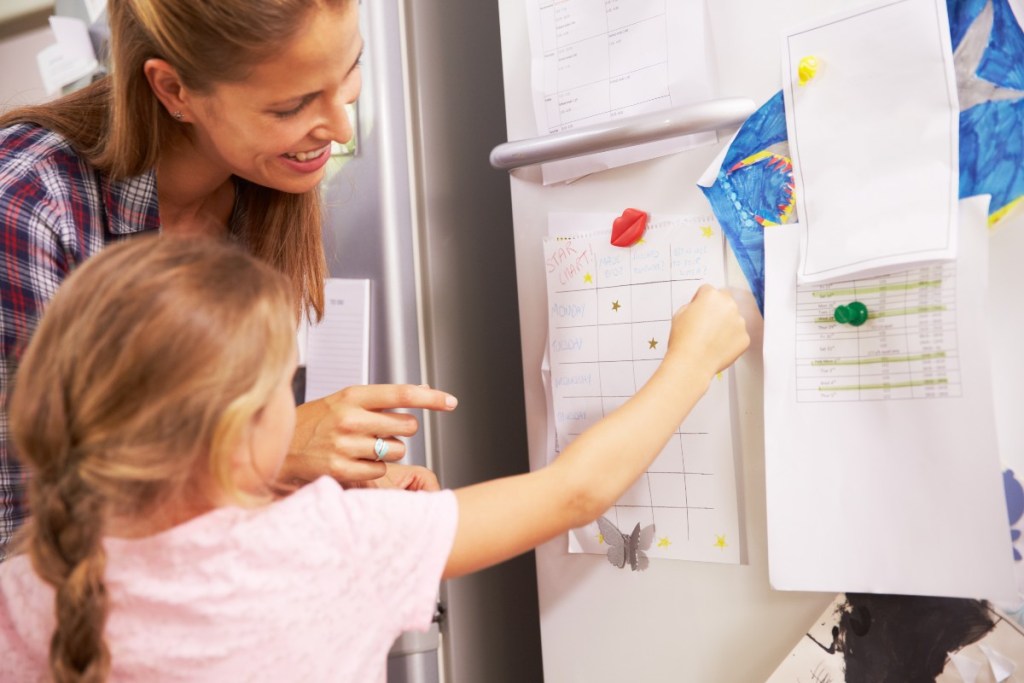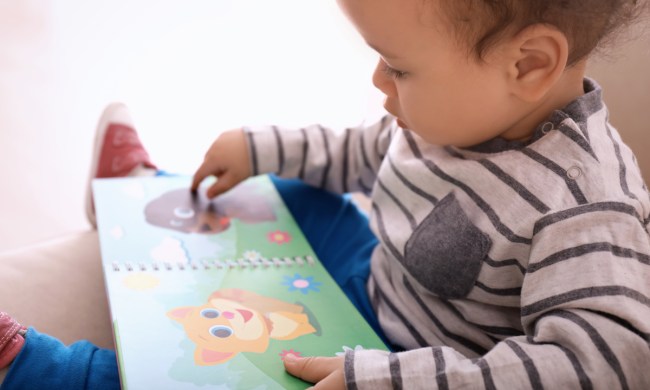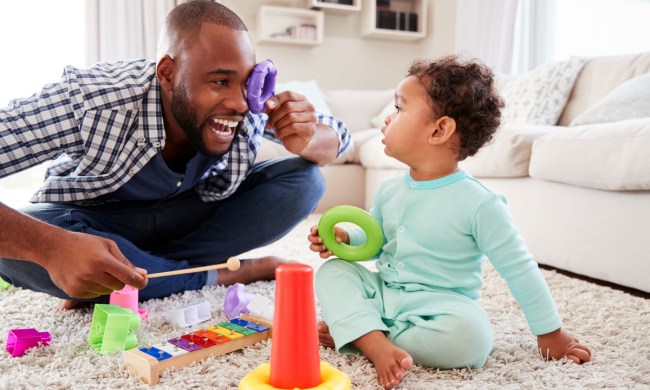So you have a young child? Naughtiness, sassy back talk, and moody meltdowns come with the territory of raising a toddler — or, you know, a tween. Figuring out how to navigate the bad behavior, encourage positive action, and improve overall attitude are all part of the never-ending learning curve.
One tangible tactic that can help is a behavior chart. It provides children (and grown-ups) with a visual representation of conduct and performance over a concise period of time. What’s more, it offers a source of motivation. Curious if a chart will work for your child? We’re sharing why they’re beneficial — plus, some ways they can be used to incite better behavior and instill responsibility.

Behavior chart ideas
Before you and your family can reap the benefits of a behavior chart, you need to decide if you’re trying to encourage certain behavior, discourage specific bad habits, or strike a balance between the two. Once you determine the motivation, you can then decide how to set up your behavior chart.
While you can, of course, purchase a premade option, those who prefer to customize their behavior chart can DIY one from scratch. You might have a specific system in mind — based on points accumulated, stickers earned, or chores and tasks performed. Here are some thought-starter ideas for creating a behavior chart:
- Sticker chart. If you have a sticker-loving kiddo, they’ll be excited to collect a little prize every time they perform a task or exhibit exemplary behavior. Of course, if they would prefer to use their sticker in a craft, you can track success with a check mark or star.
- Points chart. Establish a number of points your child should reach by the end of the week. For every positive behavior or action, your kid can earn a point. At the end of the week, if a child achieves their goal, they get a small prize or outing (i.e., a trip to get an ice cream cone).
- Vertical color chart. If your goal is to encourage positivity and kindness, a vertical color-coded chart can help your child track their mood and work toward improving their overall attitude.
- Buy a premade option. This Melissa & Doug magnetic responsibility chart offers a plethora of “behaviors” to strive for, plus some write-on options for you to customize.
Tips for creating a behavior chart for kids
First and foremost, it’s important to keep your behavior chart age-appropriate. While you may have lofty goals and visions of tidy rooms, made beds, and completed homework, you’ll want to start slow and leave room for improvement. Show your kid grace; they are learning and growing — just as you are, too! Here are some tips to keep in mind:
- Establish goals. Have your child make the chart with you. Even little kids will appreciate being involved in the process. Talk about all the exciting responsibilities and expectations, but keep them attainable and appropriate.
- Keep behaviors specific. Don’t be vague. Young children will grasp specific tasks over general terms. Include actions like “use the potty,” “clean up toys,” and “help walk the dog.” Avoid overly broad cues, such as “be nice.”
- Avoid negative words. While you might be hoping to dissuade some not-so-great behavioral patterns, you’ll want to do this in a sensitive and upbeat way. To that end, try to avoid using words like “don’t,” “can’t,” and “no.” Instead, rephrase into positive statements. (i.e., swap out “don’t throw food” with something like “eat politely.”)
- Use graphics. You might not even need to use words at all. If you are making a chart for toddlers, they will benefit more from visual cues. Want them to brush their teeth? Draw a picture of a bright, wide smile.
- Don’t deduct points or take away rewards. If your child hits their sibling, you should reprimand, but don’t take away previously earned points or rewards. This will confuse them and can, ultimately, hurt your overall mission.
- Reward appropriately. If you are rewarding your child with a tangible prize after they’ve earned a certain amount of points or stickers, be sure you have a prize handy. If the goal is to get 20 points by the end of a week, your kiddo should get the prize upon hitting that number. Instant gratification will continue to drive motivation.

How to make a behavior chart a long-term success
Think of a behavior chart as a temporary means to instill key actions and foster good habits. It might work in the short term, but eventually you’ll want your child to “wash hands before dinner” without prompt or promise of an eventual reward.
With this in mind, keep the conversation going; your child may be young, but communication is the key to transitioning a short-term behavioral chart into a long-term success. Verbally praise your child along the way — you want your pride to hold more value that a silly prize. What’s more, you want them to gain self-confidence and self-satisfaction as they continue to progress — even after your chart is retired.
A chart is not going to solve all your child’s behavioral problems, but it certainly can help to set them in the right direction. With learned tools, open communication, and some goal-oriented motivation, your kiddo can work to take responsibility, show empathy, and act with kindness, respect, and love. Now that’s the ultimate prize!


